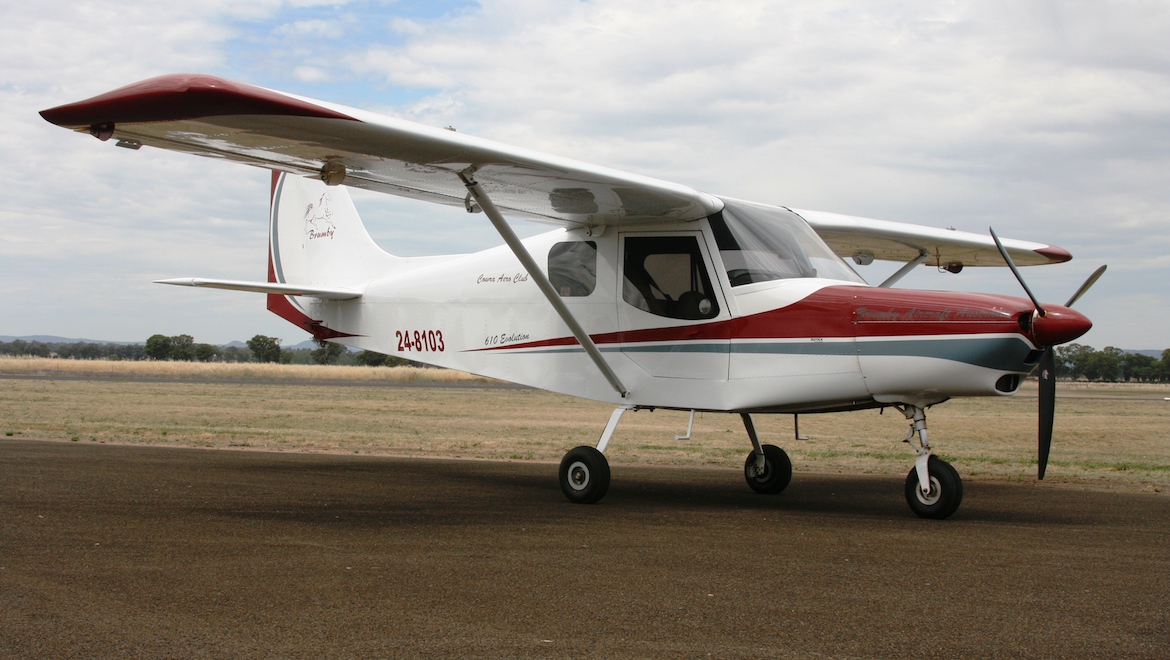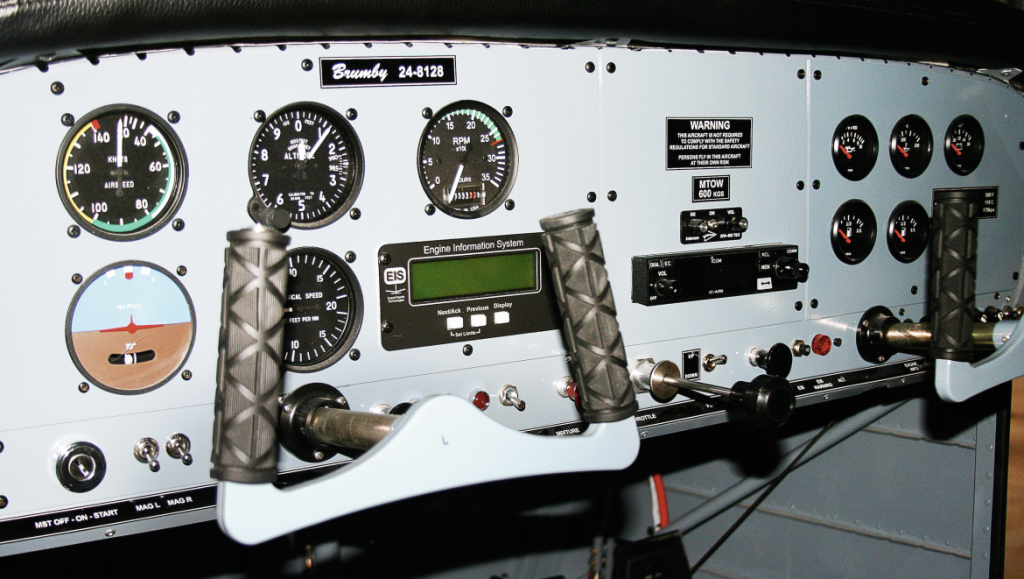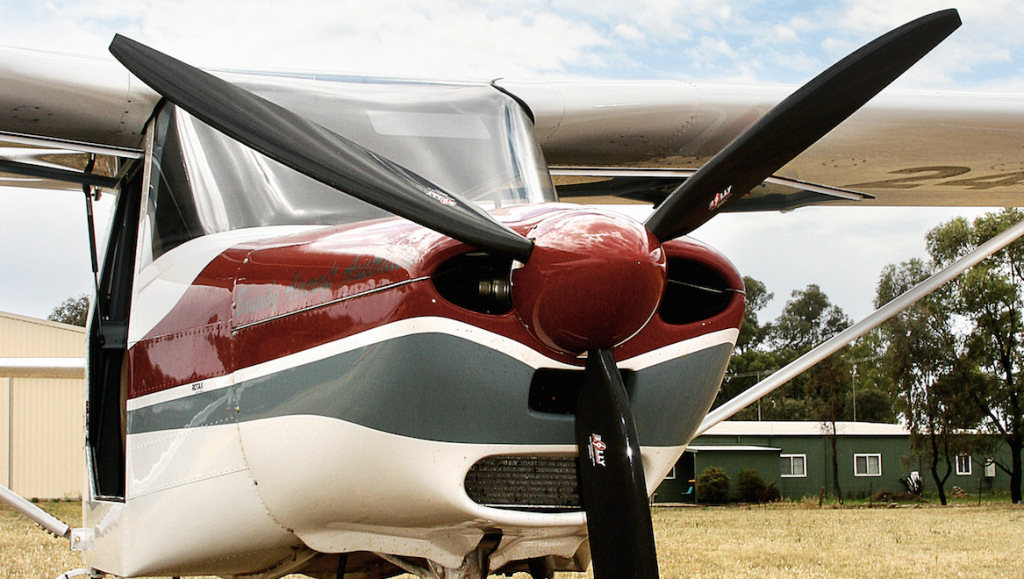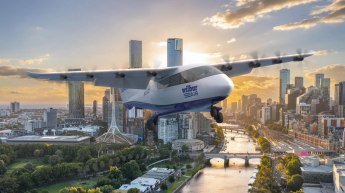This week’s Throwback Thursday feature comes from the January/February 2013 edition of Australian Aviation, where Owen Zupp tests out the Brumby 610 Evolution.

Despite the significant growth of Light Sports Aircraft (LSA) in Australia over recent years, for many there still remains a cultural hurdle to overcome. Like the stoic supporters of a long-established football team, some traditional general aviation advocates remain loyal to their aircraft, unable to cross the perceived divide. In the Brumby 610 Evolution, the aircraft to bridge that gap may well have arrived.
Brumby’s stable
I last visited Brumby’s Cowra facility a few years ago to fly its sporty low-wing model. At the time I was impressed by both the processes and the philosophy of the all-Australian company. Founder Philip Goard and his family-based team had infused old-fashioned Aussie rural practicality and craftsmanship into the design and manufacture of their aircraft. The modern technology of computer-aided design and a router to produce metalwork with precision were all in place, but in many ways they are just the tools used to execute the vision. And on that previous visit they offered me a glimpse of that vision.
There in the corner was a bare metal cage held in place by a jig. Philip’s son Paul pointed to the welded frame and informed me that was the beginnings of their new design, a high-wing version of the Brumby LSA. Now I stand in the same building and where those bare metal bones once stood, a finished aeroplane proudly stands, the Brumby 610 Evolution.
Within these walls is a hive of activity with corrosion-proofed airframes being assembled and engines bolted to firewalls. There are new faces in the back-rooms, as young apprentices learn their trade under the watchful eyes of the ‘old hands’. Finely honed undercarriage components sit atop benches and impressively constructed wings rest on trestles awaiting their new skin. In the context of Australian general aviation, the Brumby facility is a wonderful example of what is possible.
For now, it is time to see if that quality of process is to be found in the finished product.

Introducing the Evolution
At rest, the high-wing Brumby 610 is somewhat deceptive. It ticks all the boxes to qualify as an LSA with a maximum takeoff weight of 600kg, but it looks far more substantial. The sprung steel main undercarriage is complemented by a solid-looking nosewheel, complete with oleo suspension and directly linked steering. The metal wings are of a relatively thick camber and are slightly tapered in at the root, affording better visibility ‘up and ahead’ for the pilot. Those same wings proudly boast struts anchored by readily visible bolts as if to further emphasise the strength of this construction. This is an all-metal aeroplane in a world where composite structures are increasingly the norm and it looks ready to take the best the worst pilot can throw at it.
Sitting high upon its landing gear, there is significant ground clearance for the three-bladed propeller and I suspect unsealed runways would not present any issues for this aeroplane. It is worth noting at this point the aircraft in front of me is the Rotax 912S-powered model with 100hp (75kW) at its disposal. However, the Brumby 610 is also available with a Lycoming O-233 116hp (87kW) powerplant under the cowling which may well be to the liking of commercial operators.
While the high-wing Brumby may look significantly different to its low-wing predecessor, the two actually share more than is immediately apparent. Beneath their respective skins are a number of common components which add to the ease of manufacture and the economies of scale, which carry through to the bottom line. And while the Cowra facility has the ability to fabricate virtually any component of either model, the 610 boasts familiar brand names such as Cleveland brakes and Sensenich propellers.
The lowered flaps extend along more than half of the wing’s trailing edge and are simple, electrically driven devices. The fin is nicely swept and the horn-balanced rudder extends the full length of the vertical stabiliser. The aft fuselage is swept up to provide generous clearance for the tailplane in even the most untidy nose-high rotation or flare. In a nutshell, the Brumby 610 Evolution looks simple and substantial and I can’t wait to fly it.

in its simplicity. (Owen Zupp)
Taking flight
Climbing aboard the Brumby is a breeze. There is a step to aid entry, but in reality the simplest way to climb on board is to back up to the sill of the cockpit and sit down before swinging one’s legs up. The doors either side are hinged at the top of the frame and pivot up in a gull-wing fashion, offering a large doorway. The aircraft can also be flown with the doors off, which is a sporty feature and a wonderful asset for aerial photography and other potential airwork tasks.
Entry on both sides is aided by a substantial fixed handle where the windscreen meets the wing root. Take note flying schools, as this will reduce the wear and tear of students pulling on the instrument panel coaming in search of a hand-hold. Once seated that same handle can be used to adjust the seat fore and aft in conjunction with the lever on the seat’s lower rim. Once seated, I pause for a moment to survey the interior of the Brumby.
I described the Brumby’s external impact as simple and substantial. If I was to paraphrase the internal setting, I would describe the cockpit as simple, substantial … and spacious. It is built to easily accommodate occupants of well over six feet and best of all, the cabin
is seven inches wider than a Cessna 172. That’s right, not a Cessna 152, a 172! Behind the seats is a luggage shelf and a well thought-out floor storage area with a small dividing panel to limit fore and aft movement of bags and the like.
The seats are stylishly upholstered, while ahead the all-metal instrument panel houses a mix of analogue instruments and Dynon EFIS. A solid push-pull throttle reminiscent of Cessna is centrally located on the instrument panel, while the Lycoming-powered version also hosts a mixture control. Toggle switches line the lower edge of the panel for electrical and ancillary functions, as well as flap selection, simply full up or full down. A narrow centre pedestal runs between the seats and houses the trim wheel as well as enhancing the personal space between the occupants.
On this aircraft the dual control columns are ‘sticks’ extending from beneath the lower edge of the instrument panel, although steering-wheel style yokes are also available. At floor level, the no-nonsense rudder pedals are suitable for work-boots and runners alike and facilitate the directly linked nosewheel steering and individual toe-brakes. Ahead a huge windscreen affords a wonderful forward view over the cowling and high into the sky. This aircraft may be an LSA, but there is a real sense of space.
Before starting the Rotax engine, I secure my four-point harness and ensure there is adequate fuel contained within the wing tanks, which combined can house 140 litres. I then verify that the fuel is switched on via two big, red well-labelled, unambiguous fuel selectors mounted high on the cockpit’s sidewall. Both are easily reached from either seat and are selected ‘on’ or ‘off’ with nothing left to the imagination. I like it.
The Rotax bursts into life at the first turn of the key and after completing the after-start checks, we’re on our way. Beside me is Paul Goard and he’s a fair-sized bloke, but in the Brumby there is no sense of confinement for two occupants of real-world dimensions. Moving off I am immediately impressed by the ground handling. While most LSAs are equipped with adequate castoring nosewheels, the Brumby has good old-fashioned direct steering and differential brakes. Students will find steering the aircraft to be a breeze and if you touch one brake in a turn, you can pivot the Brumby and its 28ft wing span on a five cent piece. Engine run-ups and pre-takeoff checks are conventional for a Rotax-powered aircraft and as we sit there on this 29 degree Celsius day, there is adequate ventilation through large fish-eye vents mounted on each door. And in winter, there’s a cabin heater, too.
Lined up on Cowra’s Runway 33, I advance the throttle smoothly and after a couple of hundred metres and with 45kt on the airspeed indicator, the Brumby starts to ‘unstick’. At 55kt I rotate and set the top of the nose on the horizon. On this warm day that offers me a climb speed of 70kt and a climb rate of 750ft/min with two on board and great forward visibility. A little back force and 65kt offers a couple of hundred feet per minute more, but the view isn’t quite as good.
Departing overhead, the aircraft trims out to fly ‘hands-off’ with absolute ease. Encountering some convective turbulence, the solid little Brumby 610 nudges through the bumps without any real disruption. In the turn, the rate of roll is not brisk, but definitely in proportion to the degree and speed of the pilot’s input. With my feet on the floor, the balance ball sits about half a balance ball off centre as we wheel around the horizon. With my feet back on the floor and increasing the bank into a steep turn, the aircraft calls for a little more aft ‘stick’ and trim, but is equally stable. Throughout the turns, the lookout afforded by the large windscreen is of obvious benefit. Once level, and for something different, I take my hand off the control column and smoothly enter a turn on rudder alone, adjusting the pitch with a little aft trim. Once again, hands-off, the Brumby just sits there and is the most stable LSA aircraft that I have flown.
Slow-speed handling is equally admirable with aileron, elevator and rudder all remaining smooth and responsive by virtue of the large control surfaces. Lowering the flaps fully, I then select carburettor heat ‘on’ and close the throttle while maintaining my altitude with increasing back pressure on the control column. With the control column at the aft limit of its travel, and about 35kt of airspeed, there is a light buffet and a gentle lowering of the nose – we have stalled. Well, we are mushing down to earth at a gentlemanly 500fpm with absolutely no tendency to drop a wing. The combination of the generous camber and an aerofoil set at around 26 per cent mean aerodynamic chord equates to very calm stall characteristics for the Brumby. Recovery is as simple as relaxing the back pressure, increasing the power, carb heat ‘off’, climbing away and raising the flaps. Throughout the manoeuvre, the pitch changes are minimal and can easily be flown without any dire urgency to re-trim the aircraft.
Before returning to the circuit, I close the throttle once more and trim for a glide descent at 65kt. Once again, the aircraft is extremely stable and descends at a mere 500fpm, offering a reassuring journey back to earth if the engine up front went quiet. As we track back to the airport, with 5,200rpm on the tachometer, we have a true airspeed of around 105kt and Paul tells me that is for an average fuel burn of 20 litres per hour. With full tanks, that equals 7 hours aloft with no reserves. Realistically, I see the Brumby in the cross-country role carrying two people and around four hours of fuel with reserves, but solo, you’ll fly a very long way on full tanks.
In the circuit I throttle back to 4,000 rpm and decelerate on downwind. Checks complete, I turn base and extend full flap, trimming the Brumby for 65kt. With the power set and the aircraft trimmed, I feel almost redundant as the aircraft holds the aim point steady in the windscreen. Over the threshold, the throttle is smoothly closed and those wings offer enough residual lift to ease the wheels onto the asphalt and still fly the nosewheel onto the ground. Full power, retract the flaps and away we go again.
Throughout a series of takeoffs and landings I find it hard to fault the handling of this aeroplane. For the commercial operator or private owner alike this is a simple, forgiving aeroplane that makes you feel at home very quickly. Flapless landings still have a great forward view and require only a slightly reduced flare, while a go-around calls for minimal trim changes and comfortable control forces in the pitching plane. This is an easy aeroplane to fly.
We complete the flight with a short field landing on the rather ragged grass cross runway at Cowra. I approach at 60kt, although I am confident the aircraft would fly a good deal slower still with margins of safety. Approaching the aim point I close the throttle, flare, touch down and smoothly apply the brakes to full. The ground roll would be lucky to be 200 metres and the sturdy undercarriage made light work off the less than ideal runway surface. Farmers, this aircraft is for you too.
Unfortunately, that was the end of our flight, although I would have swapped my Toyota Corolla for the Brumby in a heartbeat for the trip home. Alas, it was not to be and we taxied in and tied down the aircraft for the night. It had been an impressive flight and I couldn’t help but cast an eye upon the Brumby’s Lycoming-powered brother. I’ll be back.

Bridging the gap
Cultural divides can be difficult to overcome and the acceptance of LSA in some quarters of general aviation is no different. However, in the case of the Brumby Evolution the line between these branches of aviation is very fine. It is substantially engineered and its all-metal construction is a match for the traditional trainers like the Cessna 152, and in terms of space and comfort, the Brumby surpasses it.
In the air the Brumby High Wing handles with the stability and substance of a heavier airframe while still coming in at the 600kg MTOW limitation of LSA. This parallel performance means any GA pilot wishing to move over to LSA, or any LSA pilot desiring to convert to larger GA aircraft would find the transition a very straightforward process. Its airframe is built for longevity and to absorb the very best a student pilot can throw at it, so its potential for flight training operations is strong. Coupled with the Lycoming engine particularly, I can see the Brumby having a genuine impact on those schools equipped with ageing Cessnas and Pipers.
Brumby’s Evolution lives up to its name as it has taken the company’s established approach to aircraft manufacturing to a new level and quite possibly to a new marketplace. As a trainer, private aircraft or rural runabout, this Brumby is equally at home in any role. It is a light sport aircraft with a substantial feel and an all-Australian pedigree. With so many impressive qualities, the Brumby Evolution may just be the aircraft that breaks down some of those old cultural walls and finally bridges the GA gap.
To read more stories like this, subscribe here. Digital editions of the magazine can be purchased on Zinio and Issuu, or in the Apple app store.














